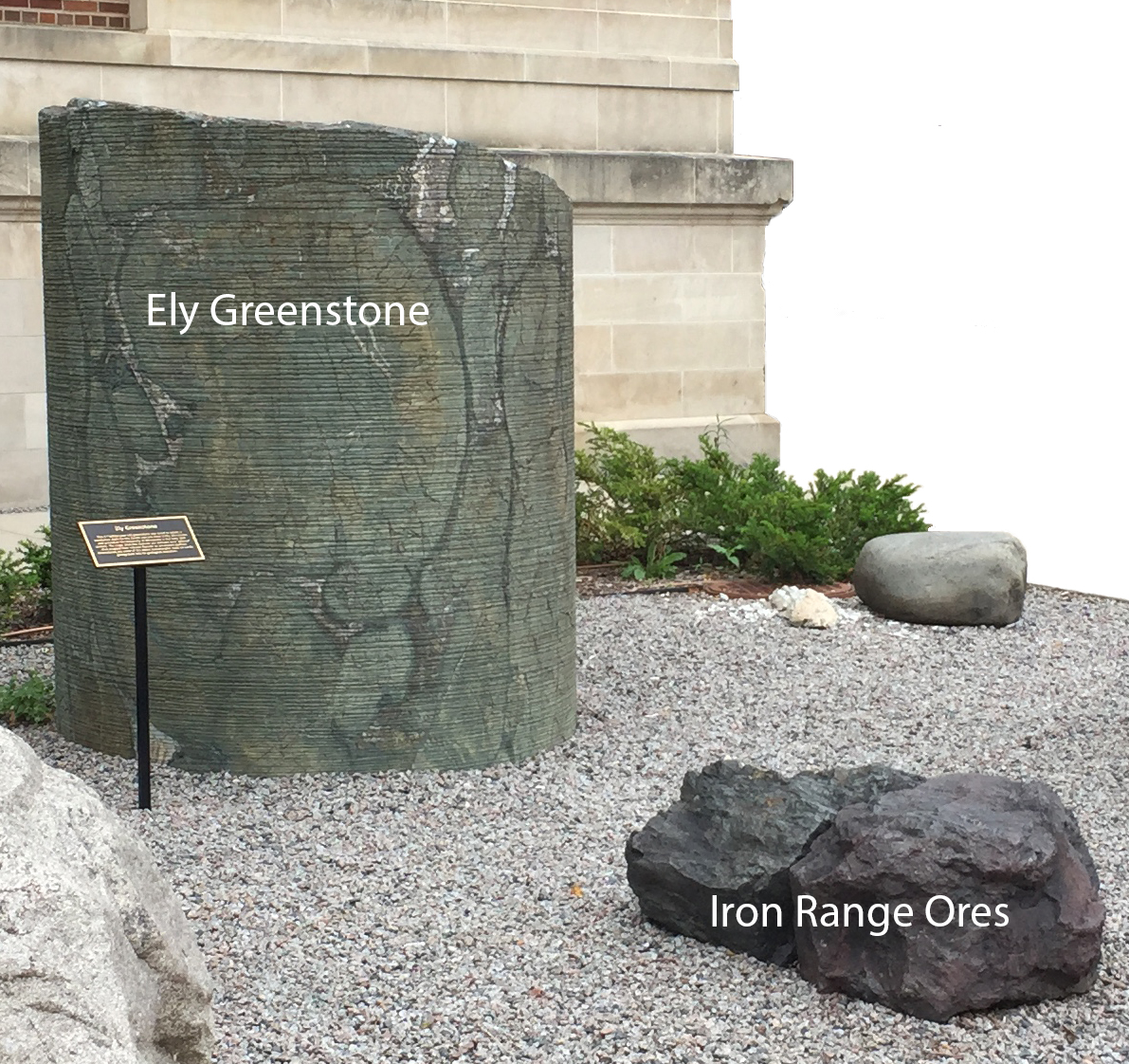
Ely Greenstone Column and Iron Range Ores
The Ely Greenstone represents a time midway through Earth’s existence and a point midway through its evolution. It formed at a time when the planet’s oceans and atmosphere first began to approach their modern chemistries, and during a period when the Earth’s large continents were first beginning to form.
This column of 2.7-billion-year-old rock was cored to create a ventilation shaft for mines into underlying, even older iron ores of northern Minnesota’s Iron Range. The two smaller dark-colored rocks in front of the column are samples of those iron ores. These Iron Range ores formed early in Earth’s history, at a time when the world’s oceans and atmosphere had fundamentally different chemistries than those of modern seas and air. In the absence of free oxygen, Earth’s early oceans were saturated with dissolved iron and silica. As photosynthetic organisms arose, they produced free oxygen. But for over a billion years almost all of that free oxygen quickly combined with dissolved iron and silica to produce deposits of iron ore and chert. It was not until almost all the dissolved iron and silicon had been deposited that free oxygen began to accumulate in Earth’s atmosphere and oceans. During World War II, Minnesota’s Iron Range rocks produced nearly all of the steel that sustained the Allied war effort.
Although it lacks the economic value of the underlying iron deposits, the overlying greenstone rock that this column was taken from reflects a rich geologic history in its own right. The large, rounded shapes in its texture formed as lava erupted from fissures along an ancient ocean ridge. As this lava encountered water, it quickly cooled into rounded ‘pillow’ shapes that broke apart from one another as lava continued to rise. Subsequently, light-colored spar filled some of the pore spaces beneath the broken pillows. Much later on, converging micro-continents trapped this newborn seafloor rock between them to form the core of what would become North America. As parts of the seafloor buckled and fractured during these collisions, the rock metamorphosed. This metamorphism gave the rocks their greenish cast as some iron-bearing minerals were converted into the minerals, chlorite, epidote, or actinolite.